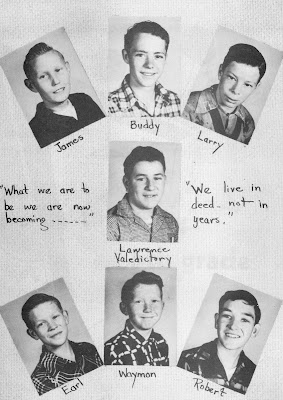Architect
Richard Sharp Smith was born and educated in England. He immigrated to the United States in 1882
and in 1886 began working for Richard Morris Hunt in New York. Hunt sent Smith to Asheville as the
supervising architect for the Biltmore House in 1889.
After
completing work throughout the Biltmore Estate and nearby Biltmore Village
Smith opened a private practice. He
designed a large number of governmental and commercial buildings, as well as
private homes in Asheville and throughout Western North Carolina. Smith used a variety of styles including
Tudor Revival, Colonial Revival, Classical Revival and Craftsman. His clients were prominent civic leaders and
businessmen.
Structures
in Brevard and Transylvania County designed by Smith include the old First
Baptist Church, the homes of H.P Clarke, F.L. DeVane and the Fraternity
Building. H.P. Clarke’s daughter, Nancy
Clarke-Carrier opened Rockbrook Camp around the Colonial Revival Clarke family
home in 1921. The DeVane house on
Caldwell St. is now Moody-Connelly Funeral Home. The Fraternity Building includes Bracken
Mountain Bakery, The Children’s Center Emporium, and Local Color on the west
side of South Broad Street in downtown Brevard.
 |
| Former Brevard Presbyterian Manse |
On Brevard’s
popular West Probart Street, Smith designed the Brevard Presbyterian Church
Manse and the home of Mrs. Henry.
According the Transylvania:
The Architectural History of a Mountain County, both the Brevard
Presbyterian Church and the manse were designed by Richard Sharp Smith. However, the church was built prior to 1900
and the manse after 1912.
Richard
Sharp Smith’s architectural drawings for the manse, dated September 1912, are
located in the North Carolina Room at Pack Library in Asheville. The craftsman-style home has weatherboard
siding on the first floor and wood-shingle on the second story. A low, hipped roof with overhanging eaves
covers the house and the single story front porch. A stone wall runs along the front yard at the
sidewalk.
In 1950 the
church and manse were sold to the new Lutheran congregation in Brevard. The Lutheran Church of the Good Shepherd held
services there until 1961.
 |
| Henry House on West Probart Street |
The one-and-one half story craftsman-style
Henry House on West Probart was also designed by Richard Sharp Smith. The first story exterior is pebbledash, while
the upper level has wood shingles on the ends and dormers. Like the Presbyterian Manse the home has a
full front porch with a hip-roof. The house also
features diamond-paned window sashes and wide overhanging roof eaves.
Brevard builder, R. P. Kilpatrick
is believed to have built the Henry House around 1903. Next week’s Picturing
the Past will feature other West Probart Street homes constructed by
Kilpatrick.
Some of
Richard Sharp Smith’s architectural drawing can be viewed online at ncroom.buncombecounty.org/Presto/home/home.aspx.
Photographs and information for this column are
provided by the Rowell Bosse North Carolina Room, Transylvania County
Library. Visit the NC Room during
regular library hours (Monday-Friday) to learn more about our history and see
additional photographs. For more
information, comments or suggestions contact Marcy at marcy.thompson@transylvaniacounty.org or 828-884-3151 X242.







